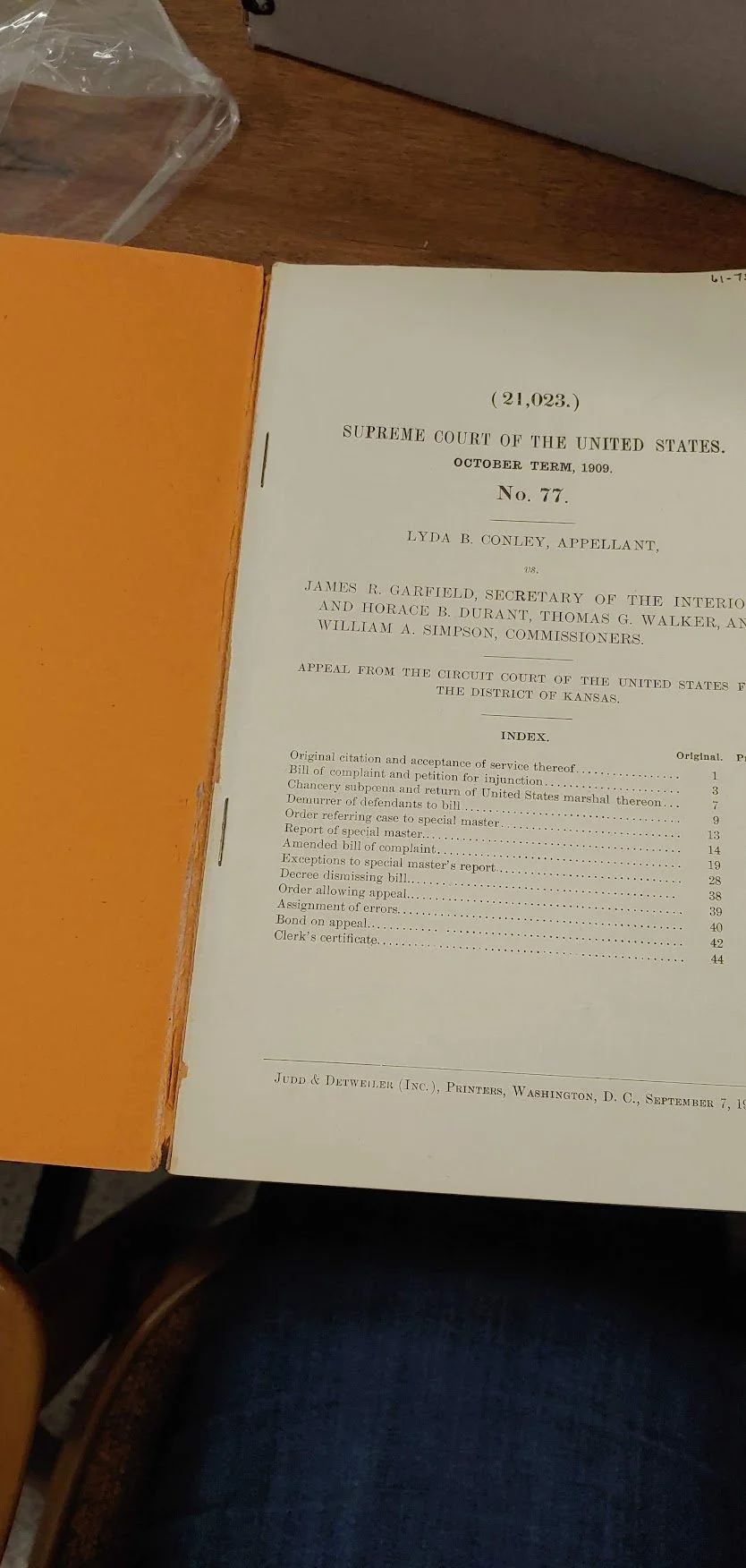This project is the final product of my senior thesis research at Kansas State University. The topic of my thesis is the Huron Indian Cemetery in Kansas City and Lyda Conley, the woman who fought to save it. Huron Indian Cemetery was established in 1843 in the middle of the land we now call Kansas City by the Wyandot Nation. Beginning in the late 1800s the cemetery was in jeopardy of being destroyed by greedy politicians and businesspeople who wanted to dig up the bodies and sell the land. Lyda Conley was a Wyandot woman passionate about saving the cemetery where her family and ancestors were buried. She became the first Native American woman to argue in the Supreme Court in order to save the cemetery. Although she did not win the case, she and her sisters, Helena and Ida, guarded the cemetery in a hut they built called "Fort Conley". They armed themselves with their father's shotgun to protect the graves of their ancestors. The Conley sisters' efforts were successful, today the cemetery is a National Historic Landmark protected by the government.
After I wrote my thesis paper, I made this book which is meant to resemble a court case file. Different folders contain different elements. My thesis, original documents and letters, photographs (black and white images are historical and color images were taken by myself in 2021), and many newspaper clippings.
Conley v. Ballinger




I was able to look at some of the original documents related to Lyda Conley. I looked at different elements such as type and binding techniques that inspired me in the design of this section of my book. I noticed the use of blackletter and typewriter typefaces which I used in my design. The binding was done using two staples on the edge of the document so, in my design, I used two rivets along the edge of the book block for a sleek appearance. Below are some reference images of these documents.












































I would like to thank the Wyandot County Museum in Bonner Springs, Kansas, and the Kansas City, Kansas Public Library for providing research material and access to original documents that helped with the completion of my research and final project. I would also like to thank Principal Chief of the Wyandot Nation of Kansas, Judith Manthe, for sitting down with me for an interview to learn more about the Conley sisters and the history of the Wyandot Nation.
To learn more about the Wyandot Nation, click the links below.




